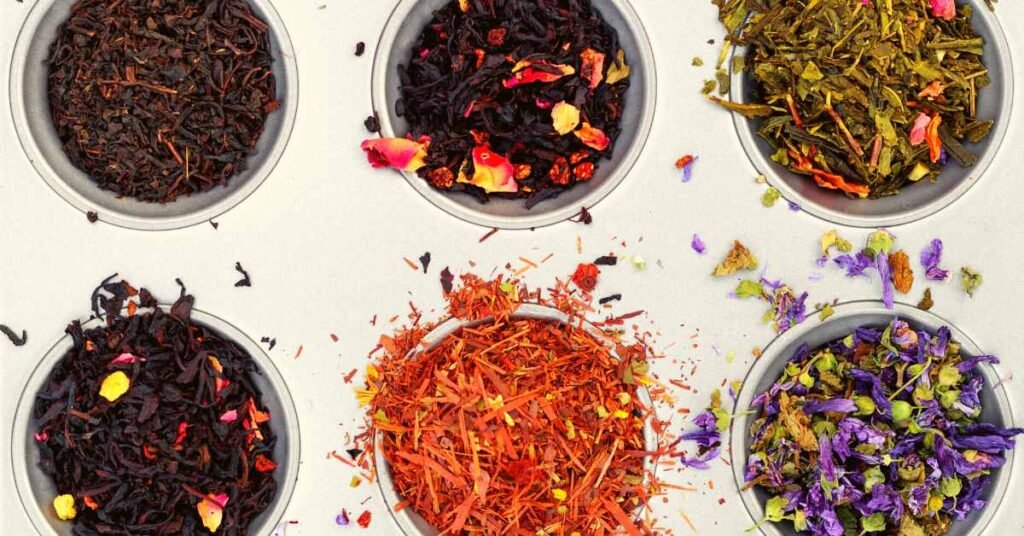Tea, the world’s second-most consumed beverage after water, has a rich and diverse culture that spans centuries and continents.
While tea enthusiasts appreciate a variety of flavors and aromas, it’s intriguing to observe that some tea types are considered more valuable than others.
This article delves into the factors that contribute to the perceived value of certain teas and explores which ones command premium prices in the global market.
Historical Significance

The history of tea dates back to ancient China, where it was initially consumed for its medicinal properties.
Over time, tea evolved into a symbol of status and wealth, enjoyed by royalty and the elite.
The intricate cultivation and processing methods of certain tea types were closely guarded secrets, contributing to their exclusivity and elevated status.
Terroir and Growing Conditions
One of the key factors influencing the value of tea is its terroir, a term borrowed from the world of wine.
Terroir encompasses the environmental factors that contribute to a tea’s unique flavor profile, including soil composition, altitude, climate, and weather conditions.
Teas grown in specific regions with ideal combinations of these factors often produce leaves with distinct characteristics, making them more valuable.
For instance, high-mountain oolong teas from regions like Taiwan or the Wuyi Mountains in China are celebrated for their complex flavors and aromas.
The slow growth at higher altitudes, combined with misty conditions and unique soil compositions, contributes to the development of delicate and nuanced tea leaves.
Cultivar and Processing Techniques

Tea plants come in various cultivars, each with its flavor profile and characteristics.
Some tea varieties are prized for their rarity and the meticulous care required during cultivation.
The processing techniques employed after harvesting also play a crucial role in determining the final quality and value of the tea.
Consider the production of matcha, a type of powdered green tea highly esteemed in Japanese tea ceremonies.
Matcha is made from shade-grown tea leaves that are stone-ground into a fine powder.
The labor-intensive process and the precision involved in cultivating and processing matcha contribute to its premium status.
Limited Production and Rarity
Scarcity often enhances the perceived value of a product, and tea is no exception.
Certain tea types are produced in limited quantities due to specific growing conditions, seasonal variations, or labor-intensive processing methods.
For example, Silver Needle white tea, made from the young buds of the tea plant, is rare and commands a premium price due to its limited availability.
Similarly, aged teas like Pu-erh, which undergo a fermentation process and can be stored for several years, gain complexity and depth over time.
The scarcity of well-aged Pu-erh contributes to its elevated status among tea connoisseurs.
Cultural Significance and Tradition

Tea has deep cultural roots in various societies, and certain tea types hold special significance in traditional ceremonies and rituals.
Japanese ceremonial teas, such as Gyokuro and Sencha, are meticulously produced and enjoyed as part of the country’s rich tea culture.
The reverence for these teas, coupled with their time-honored production methods, contributes to their premium status.
The Chinese tea ceremony, with its emphasis on gongfu cha (the art of tea-making), also elevates the value of specific tea types.
Tie Guan Yin, a high-quality oolong tea, is often used in gongfu cha for its ability to unfurl and release layers of flavor through multiple infusions.
Health Benefits and Wellness Trends
As people become more health-conscious, the demand for teas with perceived health benefits has risen.
Certain tea types, such as green tea and white tea, are celebrated for their antioxidant properties and potential health benefits.
The emphasis on wellness and the association of these teas with positive health outcomes contribute to their elevated status in the market.
For example, Dragon Well (Long Jing) green tea from China is renowned for its flat, sword-shaped leaves and is often praised for its potential health benefits.
The combination of a distinct flavor profile and perceived wellness advantages adds to its value.
Global Market Trends

The globalization of the tea industry has led to an increased appreciation for diverse tea types from different regions.
As consumers become more knowledgeable about tea, there is a growing demand for unique and rare varieties.
Specialty tea shops and online platforms cater to this market, offering a wide range of premium teas sourced from around the world.
In recent years, there has been a surge in the popularity of artisanal and single-origin teas.
Consumers are willing to pay a premium for teas that come with a story, emphasizing the journey from the tea gardens to the cup.
This trend has further fueled the notion that certain tea types are more valuable due to their distinctive origin, flavor, and production methods.
Final Word
The world of tea is a tapestry of culture, history, and craftsmanship.
The value assigned to certain tea types is a complex interplay of factors, including terroir, cultivation methods, rarity, cultural significance, and market trends.
Whether it’s the delicate nuances of high-mountain oolongs or the rich history behind aged Pu-erh, each tea type brings a unique story to the cup.
As tea enthusiasts continue to explore and appreciate the diverse world of tea, the market for premium and rare varieties is likely to expand.
Ultimately, the perceived value of a tea type is a subjective matter, shaped by individual preferences, cultural influences, and the ever-evolving trends in the global tea landscape.
MEDICAL DISCLAIMER
Itsnevernotteatime.com cannot and does not contain medical/health advice. The medical/health information is provided for general and educational purposes only and is not a substitute for professional advice.




